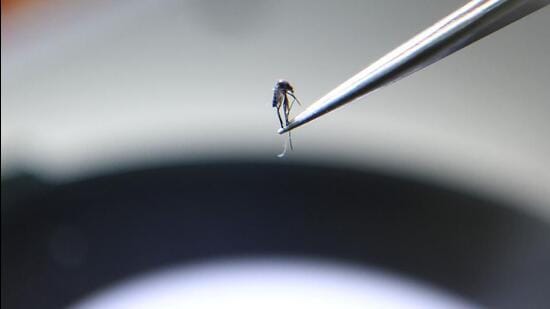
KERALA REPORTS 10 CASES OF WEST NILE VIRUS: ALL YOU NEED TO KNOW
At least 10 cases of West Nile Virus (WNV) infection have been reported in Kozhikode and Malappuram districts of Kerala, officials in the state health department said. Both the districts in north Kerala have reported five cases each.
Of the 10 infections, nine have recovered while one is under treatment at a private hospital in Kozhikode, officials said.
The deaths of two persons in the recent days are suspected to be because of the WNV virus, though no official confirmation has been made so far. Samples have been sent to the National Institute of Virology in Pune for testing.
Here are a few FAQs that might help you understand the infection better.
Q. What is the West Nile Virus and how does it spread?
A. According to the World Health Organisation (WHO), WNV is transmitted to humans through bites from infected mosquitoes. Mosquitoes get infected when they feed on infected birds and spread the virus to humans and other animals. Cases of human-to-human transmissions are not known yet. WNV is a member of the genus flavivirus and belongs to the Japanese encephalitis antigenic serocomplex.
Q. What are the symptoms?
A. As per the US-based Centers for Disease Control and Prevention (CDC), eight out of 10 people infected with WNV do not develop symptoms and may recover on their own. However, others tend to experience fever, headache, joint pains, vomiting and diarrhoea. In some cases, there could be severe illnesses such as encephalitis or meningitis that can have fatal neurological consequences and even death.
Q. What are the known diagnoses and treatment methods?
A. Several tests like IgG antibody sero-conversion, IgM antibody capture enzyme-linked immunosorbent assay (ELISA), neutralisation assays and virus isolation by cell culture can be done to diagnose the infection.
There is no known vaccine yet for humans. In severe cases, the patients will have to be hospitalised and given supportive treatment, such as intravenous fluids and pain medication.
Those who get infected with the virus tend to develop lifelong immunity.
Q. Has WNV been reported in Kerala earlier and what was the impact?
A. The first case of the WNV fever was reported in Kerala in 2011 and since then, there have been routine outbreaks of the virus in several districts. Two deaths – a six-year-old boy in 2019 and a 47-year-old man in 2022 – are the only confirmed casualties in the state till date.
Q. How does Kerala fare in detecting infectious cases and controlling outbreaks?
A. Kerala has reported outbreaks of both viral and non-viral pathogens, like Nipah, Zika, chikungunya, dengue, WNV, Kyasanur Forest Disease (KfD), over the years due to different factors. One of those is that it is able to detect these cases before they turn fatal, thanks to its decentralised disease surveillance systems and superior public health infrastructure at the primary level.
Over the years, successive governments in Kerala have invested heavily in strengthening public health infrastructure even as the private health sector also grew substantially on a parallel basis. The learnings from the Nipah outbreaks in Kozhikode and the Covid-19 pandemic attest to that. The early success of the state in controlling Covid-19 in 2020 was attributed by the UN to “active surveillance, setting up of district control rooms for monitoring, capacity building of frontline health workers, risk communication and strong community engagement”.
Kerala was the first in the country to set up an Institute of Advanced Virology and its per capita health expenditure of ₹2,272 is higher than the national average of ₹1,753. It also leads other states in parameters such as life expectancy, infant and maternal mortality.
Read more news like this on HindustanTimes.com
2024-05-07T10:49:29Z dg43tfdfdgfd